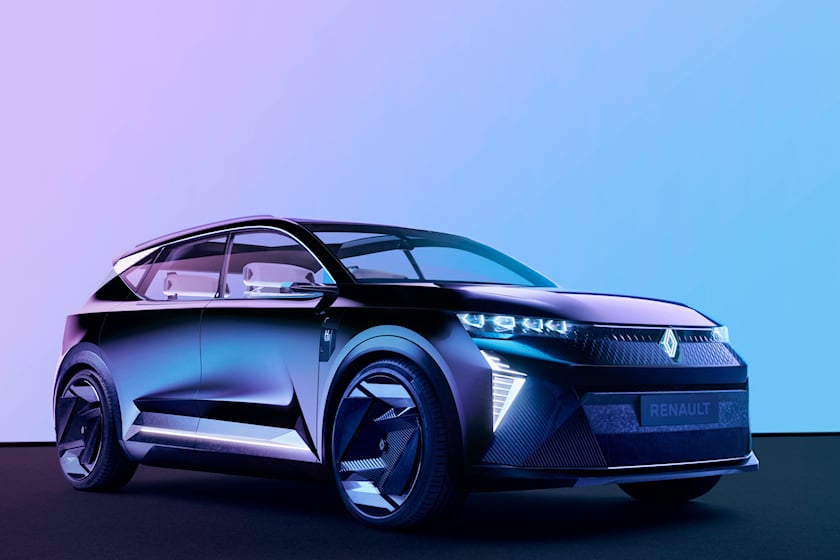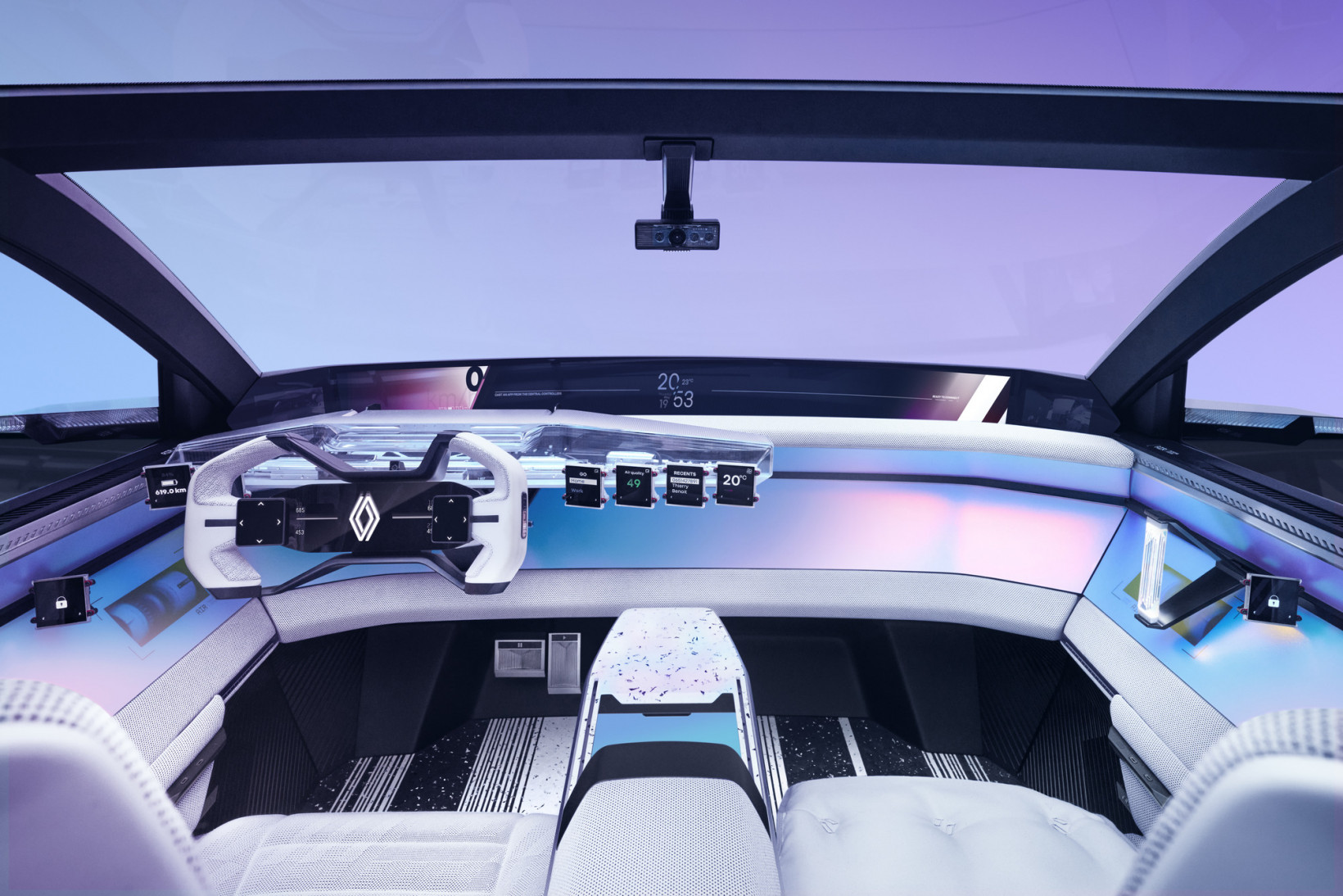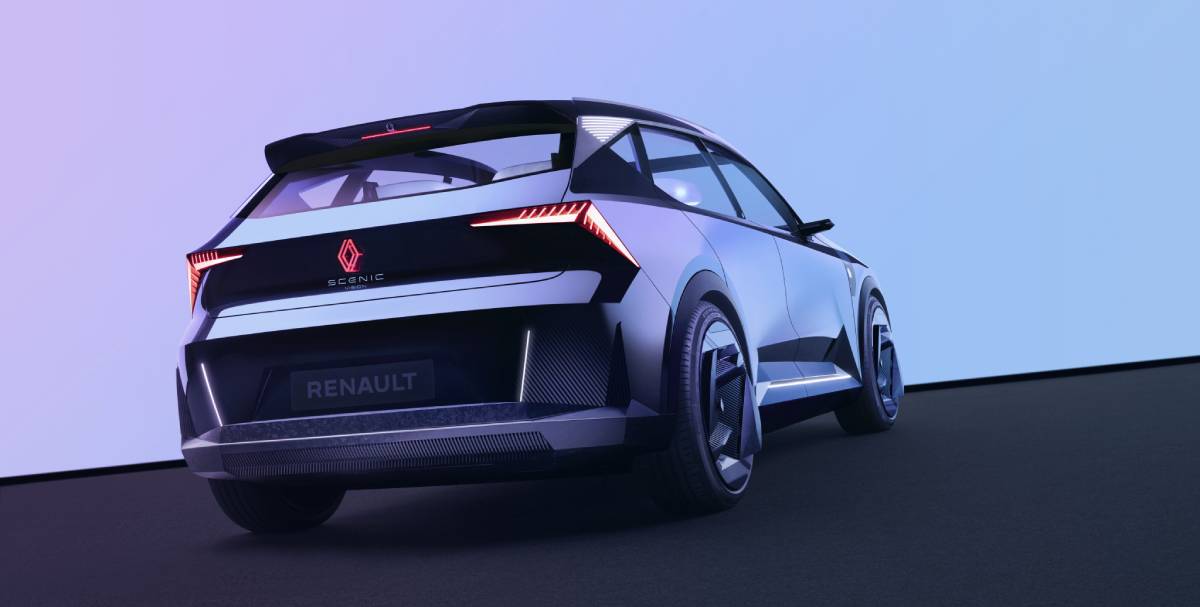An unusual hybrid
Called the Scenic Vision, the vehicle is a hybrid, but not in the usual sense. Its 215hp electric motor and 40kW battery are coupled with a 16kW hydrogen fuel cell. The car maker explains that by combining electric and hydrogen power, it can run a battery that’s twice as light, while offering the same range. And speaking of range, “once the network of hydrogen stations is large enough,” Renault says the Scenic Vision will manage up to 800km on a single charge. You can check it out in action in the video below:
Safety and tech
The SUV also comes with a whole range of other distinctive features. In terms of safety, the EV has a camera system installed in the front end that’s said to enhance the driver’s visibility by up to 24%. There’s also a risk assessment feature of the incorporated ADAS, which can detect risky behaviors and “encourage defensive driving practices”. On the inside, the cabin is dominated by a large display under the windscreen and seven smaller ones: five to provide information to the driver, and two that work as camera mirrors. Check out the small ones in the center of the dashboard, that mechanically pivot towards the driver for easier viewing. Plus there’s a cool Formula 1-style steering wheel — complete with a screen in the center!
Eco-friendly construction
What really makes the Scenic Vision stand out is its lofty aim towards sustainable manufacturing. That’s because Renault is demonstrating the vehicle as a real-world application of its transformation plan to become a carbon neutral brand by 2050. As such, the concept car is 95% recyclable and made from 70% recycled materials. For example, the carbon fiber that’s used for body parts and the hydrogen fuel tank is 100% recycled from aviation industry scrap and paper waste. Some 30% of the car’s plastic compartments are bio-sourced, while its floor is made from 100% recycled plastic from milk bottles and plastic pipes. There isn’t a scrap of leather in the Scenic Vision either. Instead, Renault replaced it with recycled low-carbon polyester. Even the tires are eco-friendly, sourced from sustainably made, natural rubber. The Scenic Vision concept will transform into a production version by 2024. While it’s unclear which features of the concept will make it to life, I hope that Renault will maintain its sustainable profile — especially, as this can drive other automakers as well to focus on developing vehicles with the minimum carbon footprint possible.


